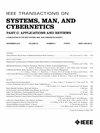一种根据术语组织知识并直观表示的方法
IEEE Transactions on Systems Man and Cybernetics Part C-Applications and Re
Pub Date : 2002-11-01
DOI:10.1109/TSMCC.2002.806064
引用次数: 10
摘要
我们描述了一种术语关系频率(TRF)方法,用于在快速发展的学术学科中查找综合文档。该方法使我们能够根据术语将知识组织到单个文档中。该方法基于根据术语的通用性和排他性将文档分类为综合类、中心类、外围类和独立类。能够快速找到文件有助于我们对学科的理解。“协调”等多义专业术语在协调科学等快速发展的学科中发挥着关键作用。多含义术语的可视化表示有助于我们快速轻松地识别这些术语的使用方式。使用TRF和可视化方法,我们可以识别全面解释技术术语的文档。我们也可以根据撰写综合文件的时间来确定学科主题的变化。我们表明,观察到的变化符合我们对领域“协调科学”主题的理解。这里讨论的方法有望帮助我们快速理解和推进协调科学等快速发展的学术学科的研究。本文章由计算机程序翻译,如有差异,请以英文原文为准。
An approach for organizing knowledge according to terminology and representing it visually
We describe a term relation frequency (TRF) method for finding comprehensive documents in a rapidly growing academic discipline. The method enables us to organize knowledge into a single document based on terminology. The method is based on the classification of documents into comprehensive, central, peripheral, and independent classes according to the commonality and exclusiveness of terminology. Being able to find the documents quickly is helpful for our understanding of the discipline. Multiple-meaning technical terms such as "coordination" play a key role in rapidly growing academic disciplines such as coordination science. Visual representation of the multiple-meaning terms helps us to identify quickly and easily how the terms are used. With TRF and visualization methods, we can identify documents that explain a technical term comprehensively. We can also identify a change in the subject of a discipline according to when the comprehensive documents are written. We show that the observed change matches our understanding of the topic of the field "coordination science." The methods discussed here are promising to help us quickly understand and advance research in rapidly growing academic disciplines such as coordination science.
求助全文
通过发布文献求助,成功后即可免费获取论文全文。
去求助
来源期刊
自引率
0.00%
发文量
1
审稿时长
3 months

 求助内容:
求助内容: 应助结果提醒方式:
应助结果提醒方式:


